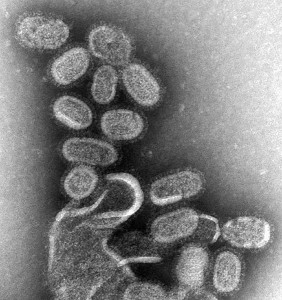Flu season and staying healthy
With Winter here comes the confinement of the indoors. Flu and cold season kick off along with it. It spans the globe every year spreading in seasonal epidemics, resulting in the deaths of 250,000 to 500,000 people every year.
There have been 3 major flu pandemic’s for the 20th Century killing tens of millions of people. Each of these pandemics being caused by the appearance of a new strain of the virus in humans. H1N1 was responsible for the Spanish Flu in 1918. The pandemic lasted from March 1918 to June 1920 spreading even to the Arctic and remote Pacific islands. Between 50 and 100 million died, making it one of the deadliest natural disasters in human history. An estimated 50 million people, or about 3% of the world’s population of 1.6 billion at the time, died of the disease. Another 500 million were infected. This is classified with the same strain that made it’s way around last year that was better known as The Swine Flu, was rated a category 6 epidemic because of it’s transmission ability, but it ended up having a lesser mortality rate than did the common flu.
H2N2, or also known as The Asian Flu of 1957 started out in China in 1956 and lasting until 1958 and was rated as a category 2 epidemic. The death toll from this strain is estimated to be from 1 million to 4 million. The WHO (World Heath Organization) puts it officially at “about 2 million”.
H3N2, or the Hong Kong Flu. Named after where it was first reported in 1968. By the end of 1968, it had been spread to Vietnam and Singapore, India and the Philippines. It reached Japan, Africa and South America by 1969.
So how do you avoid from getting the flu? “Getting the flu shot, staying away from sick people, washing your hands to reduce the spread of germs, stay home when you are sick.” also “That as many people as possible get vaccinated. Follow the 3 C’s Clean your hands, Cover your cough, and Contain- if you do feel like you have the flu protect others by staying home.” is the best advice from Patty Malloy, Mahaska Health Partnerships Public Health Coordinator.
Many of us make it years without an episode of the flu, but now your unlucky enough to have gotten the flu. What is the best way of beating it now? “Staying at home, rest. Antiviral medication started at first onset can reduce the length and severity based on your health care providers recommendations” stated Malloy.
“Flu season is unpredictable from season to season so getting the flu shot as soon as it is available late September or October is beneficial. Flu activity does commonly peak January – February but can stay active through May. Once you get the flu shot it can take up to 2 weeks for you to develop protection.” MHP’s Patty Malloy about when the typical flu season is.
Is the H1N1 strain included in this years vaccine? “Yes- along with the influenza A/H3N2 and influenza B” said Malloy.
I was curious if this flu season was projected to be worse than years past, or if we would get lucky with a mild year. “This depends how well matched the seasonal flu strains are with what flu strain is actually active and spreading this year, Year to year this is unpredictable.” Malloy said of the upcoming season.
If you happen to get the flu this year Patty Malloy has some advice to help not only you, but those around you. Again “Staying at home, rest. Antiviral medication started at first onset can reduce the length and severity based on your health care providers recommendations.”
Malloy went on to say “We have plenty of vaccine and will continue to run clinics as long as needed, don’t wait too long, if you are having trouble getting to a clinic call our office”
You can visit Mahaska Health Partnership’s website HERE or by calling the hospital at 641-672-3100.
















